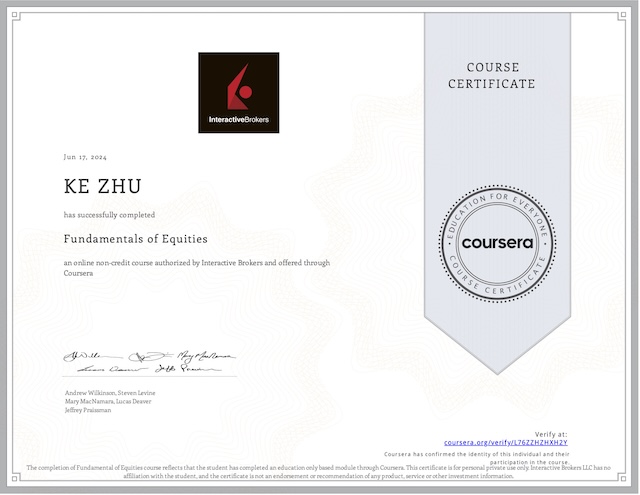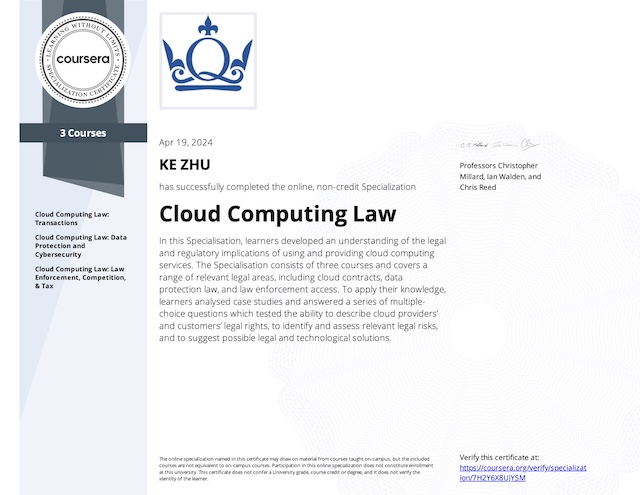In the last post, we looked at two major non-taxable exchanges: like-kind exchanges and involuntary conversions. In those transactions, any realized gain or loss is generally not recognized at the time of the transaction. Instead, realized gain or loss is deferred until some future point, usually when newly acquired property is ultimately disposed off. This deferral of gain or loss is accomplished through the basis adjustments we make in the newly acquired property, which usually means taking a carryover basis.
Excluded Gain: Sale of Residence
A third non-taxable exchange, we will not have a postpone gain but rather an excluded gain. That is the realized gain will never be recognized under the tax rules. Before introducing this third non-taxable exchange, recall the general rule for sale of a personal-use asset:
| If sale of personal-use asset generates | |
| A realized loss | The loss is not recognized |
| A realized gain | The gain must be recognized |
However, there is a very valuable provision in the Internal Revenue Code Section 121 that states that the realized gain on the sale of a principal residence can be partly or wholly excluded from income recognition. Specifically section 121 states that the taxpayers may exclude the first $250,000 of gain on the sale of a personal residence. To qualify, the rule say that the taxpayer must own and use the property as a principal residence for at least two years during the five-year period ending on the date of the sale.
For tax payers that are married and filing a joint tax return, the exclusion is higher: first $500,000 of gain is excluded. To qualify:
- either spouse must meet the at least two-year ownership test.
- both spouses must meet the at least two-year use requirements.
- neither spouse cannot be ineligible for the exclusion.
As with many tax rules, there are exceptions to the own-and-use time period. Such exceptions include:
- change in the place of employment
- physicians recommendation for a change of residence
- an involuntary conversion like a fire
- death of a qualified individual
- divorce of legal separation
The amount of exclusion is prorated in terms of the number of qualifying months over the two-year test period:
( Number of qualifying months / 24 ) * Exclusion amount # $250K or $500KThe amount realized is calculated as:
Amount realized
= Selling price - Selling expenses
= Selling price - (Ads + Broker commissions + Legal fees)Selling expenses do not include repair/maintenance made by seller to help sell the property, which are also not add to the taxpayer’s basis in the residence. Purchase of a replacement residence is not required to qualify for section 121, and basis of the new residence is simply its cost. The section 121 exclusion is automatic, but you can elect to forgo the exclusion. Any realized gain attributable to depreciation is not eligible for section 121 exclusion treatment.
Deferred Gain: Contribution of Property to a Business Entity
One other type of important non-recognition transaction is the contribution of property to a business entity. Corporation can be taxed as either:
| C-corporation | Subject to “double taxation”, which is a tax at the entity level and another tax when earnings are distributed as dividends to shareholders. |
| S-corporation | An S-corp is a flow-through (or pass-through) entity where there is no entity level tax, and owners pay tax on business earnings regardless of distributions. |
All businesses need assets to operate, they can borrow funds, but much of their assets are going to come from contributions from shareholders, usually in exchange for stock of the corporation. Having a gain recognition event in these circumstances, say forming a corporation, would severely hinder capital formation.
In Section 351 of the Internal Revenue Code, Congress has provided a special non-recognition provision for contributing property to a corporation if three main criteria are met, and this provision can apply to either a newly-formed corporation or an existing corporation:
- A shareholder contributing (most tangible or intangible) property to the corporation
- Services to the corporation does not qualify to use the non-recognition provision
- The shareholder receives stock in return
- Does not include non-qualified preferred stock, which would instead have to be considered boot.
- The contributors of property must be in control of the corporation immediately after the transaction is concluded. There are 2 tests both must be met:
- Ownership of at least 80% of the total combined voting power of all classes of stock entitled to vote
- Ownership of at least 80% of the total number shares of all classes of stock
The basis of property received shall be the same as that of the property exchanged, i.e. carryover basis.
In Section 721, the IRC provides no gain or loss shall be recognized on the transfer of property to a (newly formed or existing) partnership in exchange for a partnership interest.
Disallowed Loss: Wash Sales
Wash sales is the activity that a taxpayer disposes of securities at a loss and then acquire substantially identical securities within 30 days before/after date of loss sale.
The IRS’s fear is that the taxpayer is selling the security at a loss just try to recognize the loss and deduct it on his or her current year tax return. But by buying the security back, the taxpayer really doesn’t encounter any economic risk in the investment, if prices fluctuate.
Therefore, the IRS disallows these types of losses because they do not want taxpayers to continue their investment in a security (within 30 days), while just trying to recognize a bunch of losses for purely tax purposes. If it is outside this 30-day window, then it’s actually fine to repurchase those sold lost securities and continue to recognize the original loss.
So once you sell a security at a loss:
- If you keep it sold for at least 30 days before buying it back, you can deduct the loss from the sale on that security.
- If you buy back the security within the 30-day period, any disallowed loss that you generated will be added (increase) to the basis of the newly purchased, same or substantially identical security that caused the dis-allowance. By increasing the basis, the loss is essentially built-in now, and will only be recognized once sold in a non-wash sale.
- The holding period of the new security begins on the date of the acquisition of the old security. A new holding period does not start with a purchase of the same or identically similar security.
The wash sale rules disallow the deduction of losses, but these rules do not apply to gains that are realized upon selling securities. That is, if you sell a security at a gain, then you will recognize the gain immediately and have to pay tax on it. The IRS doesn’t care if you repurchase that security again within 30 days.
If a taxpayer repurchased (within 30 days) fewer shares than the number sold, then the loss from the sale is prorated between the recognized and disallowed loss based on the ratio of the number of new shares acquired to the number of old shares sold.
Worthless Securities
Section 165 states that loss on worthless securities is deductible for-AGI in the year they become completely worthless. Here the losses are characterized as capital losses and they’re deemed to have occurred on the last day of the tax year. This timing issue is important because it determines whether the loss will be:
- a short-term capital loss where you held up the security for one year or less
- a long-term capital loss where you held the security for more than one year
Individual taxpayers can only deduct up to $3,000 in net capital losses per year. the net capital losses that are not deducted in the current year are not lost forever. The taxpayer can carry forward those losses and apply them against future capital gains if any or deduct them against future income, but also limited to the $3,000 net loss amount.
Small Business Stock
Small business stock are governed by Section 1244. Small business stock is the common or preferred stock issued to an owner of a small business, so total amount of money or property received by corporation for the stock does not exceed $1 million.
Importantly, only the original owners of the stock receive 1244 treatment. If they sell the stock to someone else, the new owners do not get 1244 treatment. All of the deductions are for-AGI. The sale or worthlessness of this type of stock results in an ordinary loss rather than a capital loss for individuals:
- A single person can deduct up to $50,000 of the basis of the stock in the year of the loss
- A married filing joint couple can deduct up to $100,000 of the basis of the stock in the year of loss
- If there’s any additional losses beyond the first $50,000 or $100,000, then the additional loss is subject to capital loss treatment, so the individual can deduct another at most $3,000.
Now, this special 1244 treatment only applies to losses. Gains are still treated as capital gains. If the investor rides the value of the stock down to zero, Section 165 can kick in and trigger recognition for the taxpayer, and then the taxpayer can still get 1244 treatment for the losses.
For instance, B holds shares which worth $150,000 of a corporation whose total outstanding shares worth $800,000 (less then $1M, so the stock qualifies the Section 1244 treatment). Suppose B sells his stock for $50,000. Therefore he incurs a $100,000 loss.
- If B is single:
Current year for AGI deduction:
$50,000 as ordinary loss
$ 3,000 as capital loss
Remaining $47,000 are carried forward indefinitely
and applied against future income.- If B is married filing jointly:
Current year for AGI deduction:
$100,000 as ordinary lossSuppose B’s stock is totally worthless. The basis in his shares was $150,000. For complete worthlessness, Section 165 can kick in and trigger recognition. So B can reap the $150,000 in losses and use them.
- If B is single:
Current year for AGI deduction:
$50,000 as ordinary loss
$ 3,000 as capital loss
Remaining $97,000 are carried forward indefinitely
and applied against future income.- If B is married filing jointly:
Current year for AGI deduction:
$100,000 as ordinary loss
$ 3,000 as capital loss
Remaining $47,000 are carried forward indefinitely
and applied against future income.Section 1244 doesn’t require Section 165 to be invoked.
Excluded Gain: Qualified Small Business Stock
There is a special gain exclusion provision governed by Section 1202 for certain qualified small business stock held for more than five years. The requirements are follows:
- The stock must be issued by a domestic C-corporation whose gross assets don’t exceed $50 million before and immediately after issuance
- At least 80% of the value of the issuing corporations assets must be used in an active trader business
- The corporate stock must be held by a non-corporate taxpayer (an individual or partnership)
- In general, the stock must be acquired by the taxpayer on original issuance from a corporation. Stock purchase from another shareholder isn’t going to count.
The amount you can exclude depends on the time-frame when you originally purchased the stock.
| For QSBS acquired from … through … | Exclusion percentage of the realized gain |
| Aug 11, 1993 ~ Feb 17, 2009 | 50% |
| Feb 18, 2009 ~ Sep 27, 2010 | 75% |
| Sep 28, 2010 ~ | 100% |
Any amount not excluded because of percentage limitation is taxed at 28% long term capital gain (LTCG) rate. But there is a cap, maximum exclusion is greater of the adjusted basis in QSBS * 10 or $10 million.
Historically, this provision was somewhat seldom used, because even with the possibility of gain exclusion down the road, it was usually much more tax advantageous to conduct business in the pass-through entity (S-corp), unless for some reason you had to be a C-corp for a potential public offering.
However, when you combine Section 1202 with the newer corporate tax rate of 21% starting in 2018, the C-corp has become a much more attractive choice for your new entity, which makes Section 1202 that much more important to know.
My Certificate
For more on Federal Taxation: Special Gain and Loss Provisions, please refer to the wonderful course here https://www.coursera.org/learn/federal-taxation-business
Related Quick Recap
I am Kesler Zhu, thank you for visiting my website. Check out more course reviews at https://KZHU.ai



